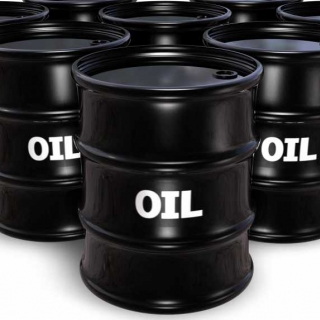


Oil futures rose more than 2% on Wednesday as Iran suspended cooperation with the U.N. nuclear watchdog and the U.S. and Vietnam reached a trade deal, but a surprise increase in U.S. crude supplies capped gains.
Brent crude rose $1.47, or 2.2%, to $68.58 a barrel by 1:12 p.m. EDT, while U.S. West Texas Intermediate crude gained $1.46, or 2.2%, to $66.91 a barrel.
Brent has traded between a high of $69.05 a barrel and a low of $66.34 since June 25, as concerns about supply disruptions in the Middle East eased following a cease-fire between Iran and Israel.
Iran enacted a law that stipulates that any future inspections of its nuclear sites by the International Atomic Energy Agency must be approved by Tehran's Supreme National Security Council. The country has accused the agency of siding with Western nations and justifying Israeli airstrikes.
"The market is pricing in some geopolitical risk premium from Iran's move against the IAEA," said Giovanni Staunovo, a commodities analyst at UBS. "But this is about sentiment, there is no disruption to oil."
Prices also rose after President Donald Trump and Vietnamese state media said the U.S. and Vietnam reached a trade deal that imposes 20% tariffs on many of the Southeast Asian nation's exports after last-minute negotiations.
Earlier in the session, prices pared gains after the U.S. Energy Information Administration said domestic crude inventories rose 3.8 million barrels to 419 million barrels last week. Analysts in a Reuters poll had forecast a 1.8 million-barrel drop. Gasoline demand fell to 8.6 million barrels per day, raising concerns about consumption during the peak summer driving season.
"During the summer, 9 million (bpd) is basically the unbreakable threshold for defining a healthy market," said Bob Yawger, director of energy futures at Mizuho. "Right now, it's way below that. That's not a good sign."
Meanwhile, the planned supply increase by OPEC+, the Organization of the Petroleum Exporting Countries and its allies including Russia, appears to be priced in and unlikely to surprise the market again anytime soon, said Priyanka Sachdeva, senior market analyst at brokerage Phillip Nova.
Four OPEC+ sources told Reuters last week that the group plans to raise output by 411,000 bpd next month when it meets on July 6, the same amount as the increases agreed for May, June and July. Saudi Arabia raised shipments in June by 450,000 bpd from May, according to data from Kpler, its biggest increase in more than a year. However, overall OPEC+ exports have been flat to slightly down since March, Staunovo said. He expects that trend to continue through the summer as hot weather drives higher energy demand.
The release of the key U.S. monthly jobs report on Thursday will shape expectations around the depth and timing of interest rate cuts by the Federal Reserve in the second half of the year, said Tony Sycamore, an analyst at IG.
Lower interest rates could spur economic activity, which in turn would boost oil demand. (alg)
Source: Reuters
Crude prices recovered from a midday dip on Friday on hopes Hungary can use Russian crude oil as U.S. President Donald Trump met Hungary's Prime Minister Viktor Orban at the White House. Brent crude ...
Oil prices rose on Friday (November 7th), but remained on track for a second straight weekly loss after three days of declines on oversupply concerns and slowing US demand. Brent crude rose 60 cents,...
Oil prices edged higher but remained on track for a second weekly decline. West Texas Intermediate (WTI) briefly approached $60 per barrel, while Brent held steady around $63 on Thursday. However, bot...
Oil prices declined on Thursday as investors considered a potential supply glut, as well as weakened demand in the United States, the world's largest oil consumer. Brent crude futures settled down 14...
Oil prices edged higher on Thursday (November 6), boosted by easing concerns over a potential oversupply as sanctions against Russian companies began to take effect. After closing at a two-week low i...
Crude prices recovered from a midday dip on Friday on hopes Hungary can use Russian crude oil as U.S. President Donald Trump met Hungary's Prime Minister Viktor Orban at the White House. Brent crude futures settled at $63.63 a barrel, up 25 cents...
US stocks rebounded from early losses to close mostly higher on Friday amid hopes that Congress members were making progress toward ending the government shutdown. The S&P 500 and the Dow Jones closed 0.3% higher, while the tech-heavy Nasdaq...
European stocks fell on Friday as investors digested more quarterly earnings, but weekly losses were inevitable, with concerns regarding overheated valuations evident. The DAX index in Germany dropped 0.8% and the CAC 40 in France declined 0.2%,...
 The U.S. Supreme Court's tough questioning of President Donald Trump's global tariffs has fueled growing speculation that they will be overturned,...
The U.S. Supreme Court's tough questioning of President Donald Trump's global tariffs has fueled growing speculation that they will be overturned,...
 European stocks opened lower on Thursday, as investors reacted to another flurry of corporate earnings.
The pan-European Stoxx 600 was 0.3% lower...
European stocks opened lower on Thursday, as investors reacted to another flurry of corporate earnings.
The pan-European Stoxx 600 was 0.3% lower...
 Chicago Federal Reserve President Austan Goolsbee on Thursday said the lack of official data on inflation during the government shutdown...
Chicago Federal Reserve President Austan Goolsbee on Thursday said the lack of official data on inflation during the government shutdown...
 Asian stocks slipped at the open on Friday (November 7), following a choppy session on Wall Street. The MSCI Asia Pacific Index fell about 0.2%, led...
Asian stocks slipped at the open on Friday (November 7), following a choppy session on Wall Street. The MSCI Asia Pacific Index fell about 0.2%, led...